Events
| Name | organizer | Where |
|---|---|---|
| MBCC “Doing Business with Mongolia seminar and Christmas Receptiom” Dec 10. 2025 London UK | MBCCI | London UK Goodman LLC |
NEWS
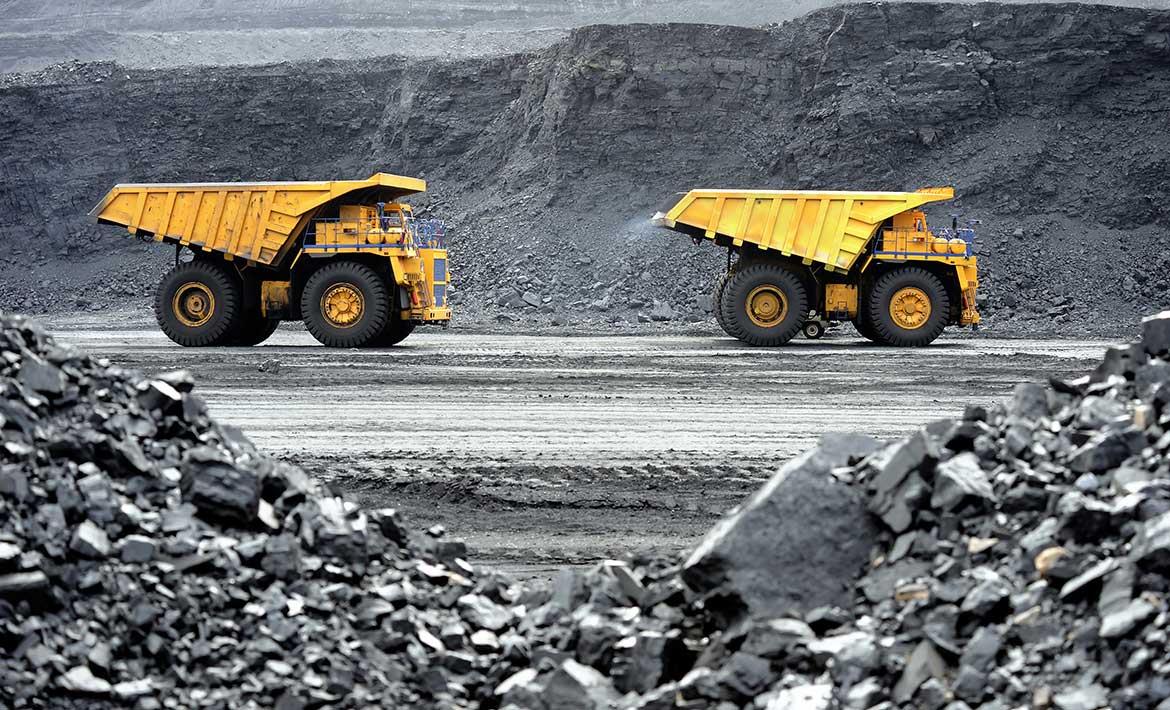
China eyes more coal imports from Mongolia as supply shortage bites www.scmp.com
Beijing has stepped up efforts to source more coal from neighbouring Mongolia amid an ongoing supply shortage, raising more questions about how long a ban on Australian coal can last.
China is suffering from a spike in coal prices amid declining supplies, which has also prompted authorities to ban an influential local trading platform from updating coal prices and market news that could fuel speculation.
Rising coal prices are another worry for China, which is already dealing with high raw material costs that are hurting businesses.
In a virtual meeting with Mongolian deputy prime minister Amarsaikhan Sainbuyan on Tuesday, Chinese commerce minister Wang Wentao broached the topic of buying more mineral and agricultural products from Mongolia, a ministry statement said.
Since the last October – which formed part of a broader trade spat between the two countries – data shows China has stepped up purchases of coal from other exporting countries, including Mongolia, to meet domestic demand that has spiked due to bouts of extreme weather.
has replaced Australia to become China’s largest source of imported coking coal since the second half of last year, but transport between the two countries has been frequently disrupted by Covid-19 outbreaks in the landlocked east Asian nation.
Local media reported on August 21 that Ganqimaodu customs in China’s Inner Mongolia autonomous region had suspended coal imports from Mongolia for two weeks due to pandemic prevention. The port carries about half of China’s coking coal shipments from Mongolia.
Soon after the border closure, prices of Chinese coking coal, as well as coke and thermal coal futures, surged to record daily highs, although the official position of the customs agency was that clearance of coal was “normal”.
At Tuesday’s meeting, Wang also discussed border congestion with Amarsaikhan.
“[China] hopes that both sides work together to ensure smooth trade flow of goods at border ports on the basis of effective pandemic prevention,” Wang said.
Amarsaikhan in turn proposed an increase in the number of Chinese coal trucks entering the country to transport supplies across the border, a statement from the Mongolian government said. He also suggested more rail transport of coal to China.
The two parties agreed to increase Covid-19 control measures and to accelerate the implementation of China’s soft loan and grant projects.
China’s monthly imports of coal fell by 7 per cent to 28.05 million tonnes in August, according to Chinese customs data released on Tuesday.
Australia’s exports of both thermal and coking coal make up a big percentage of China’s coal imports, and are required to supplement shortages in local production. China does not produce enough coal to meet its demand.
Huang Jianjiang, an analyst at commodity research portal Bestanalyst, said in a note two weeks ago that coal supply from other countries has been unable to make up the supply gap left by Australian coal.
He also said domestic production was likely to be weaker than China’s official forecast, since many mines that are not monitored by authorities had cut production, while overproduction had been banned.
Chinese policymakers have said they will not tolerate hoarding and speculation of coal, and will show “zero tolerance” for illegal trading activities.
The price of coking coal exceeded 4,000 yuan (US$620) per tonne in some parts of the coal trading hub Shanxi province last week – a surge of more than 45 per cent since the beginning of August, according to Kaiyuan Securities.
The National Development and Reform Commission (NDRC), the country’s top economic planning agency, this week shut down the pricing indexes and two WeChat accounts of Yulin Coal Trading Centre, saying the company was publishing false information and was not authorised to collect, edit or publish news.
The firm has promised to “stop releasing false information about the coal market through any channels”, the NDRC said in a statement on Tuesday.
“All relevant companies, institutions and We-media should … prevent malicious speculation of coal prices, bidding up prices or hoarding.
“The NDRC will continue to strengthen information monitoring, while working with other departments to crack down on illegal activities, ensuring coal supplies and stabilising the price.”
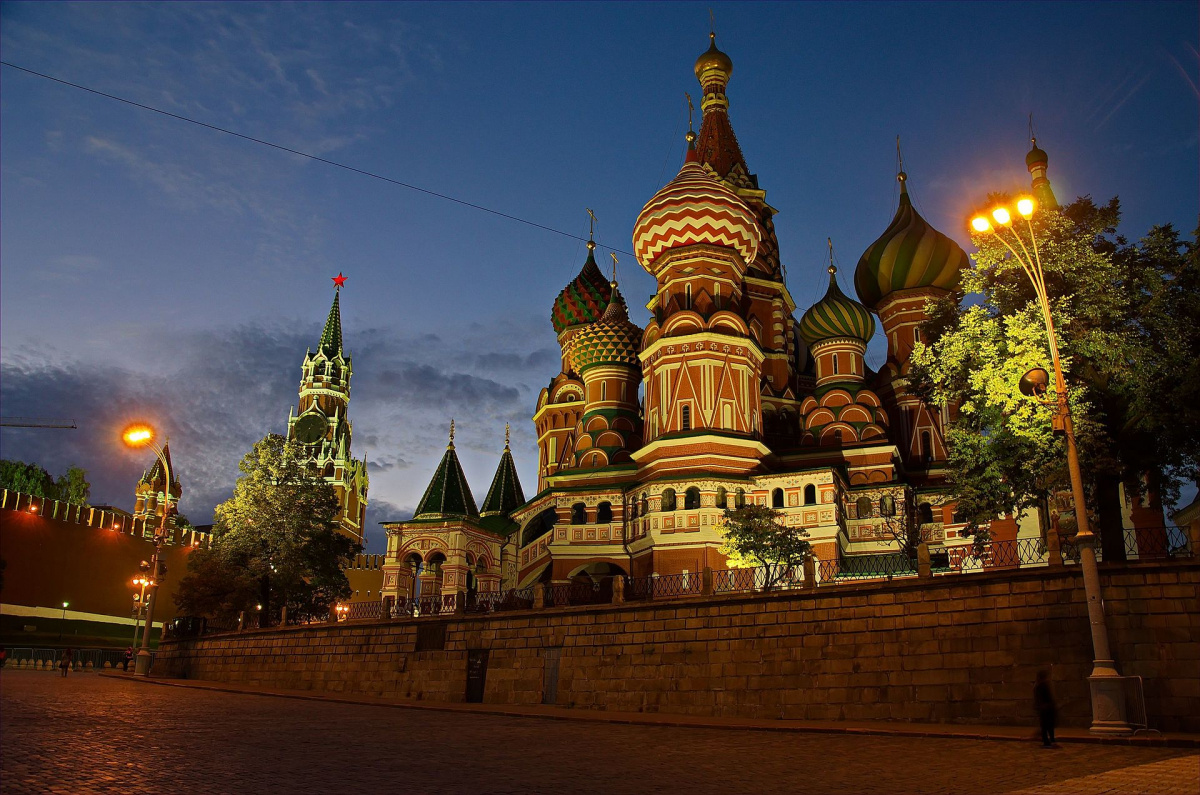
Feasibility study on free trade agreement between Mongolia and EEU to be accelerated www.montsame.mn
Ambassador Extraordinary and Plenipotentiary of Mongolia to the Russian Federation D.Davaa had a meeting with Andrey Slepnev, Member of the Board – Minister in charge of Trade of the Eurasian Economic Commission, on September 6.
At the meeting, Mr. Andrey Slepnev proposed stepping up the development of draft report of the joint feasibility study on a free trade agreement to boost trade and economic cooperation between Mongolia and Eurasian Economic Union (EEU). It was mentioned that there are plans to finalize the draft joint study report within November 2021 and present it to a December meeting of the heads of state of EEU members for authorization to start official talks.
Ambassador D.Davaa undertook to put emphasis on developing the draft agreement with promptitude and pointed out the possibility of increasing the frequency of consultations.

25,000 Years long seismic cycle in a slow deforming continental region of Mongolia www.nature.com
The spatial distribution of large earthquakes in slowly deforming continental regions (SDCR) is poorly documented and, thus, has often been deemed to be random. Unlike in high strain regions, where seismic activity concentrates along major active faults, earthquakes in SDCR may seem to occur more erratically in space and time. This questions classical fault behavior models, posing paramount issues for seismic hazard assessment. Here, we investigate the M7, 1967, Mogod earthquake in Mongolia, a region recognized as a SDCR. Despite the absence of visible cumulative deformation at the ground surface, we found evidence for at least 3 surface rupturing earthquakes during the last 50,000 years, associated with a slip-rate of 0.06 ± 0.01 mm/year. These results show that in SDCR, like in faster deforming regions, deformation localizes on specific structures. However, the excessive length of return time for large earthquakes along these structures makes it more difficult to recognize earthquake series, and could conversely lead to the misconception that in SDCR earthquakes would be randomly located. Thus, our result emphasizes the need for systematic appraisal of the potential seismogenic structures in SDCR in order to lower the uncertainties associated with the seismogenic sources in seismic hazard models.
See the full article on the link below https://www.nature.com/articles/s41598-021-97167-w
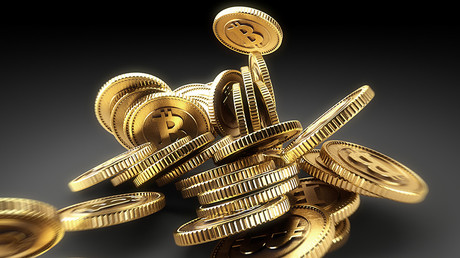
Russia is not ready to recognize cryptocurrencies – Kremlin www.rt.com
Russia is not ready to recognize bitcoin or other cryptocurrencies, because equating cryptocurrency with money would harm the country’s financial system, Dmitry Peskov, the press secretary of the Russian president, has said.
“It is certain that Russia is not ready for such steps. So far there is not the slightest reason to [recognize cryptocurrencies],” Peskov told reporters, dubbing bitcoin a quasi-currency.
“De facto, equating [cryptocurrencies] with monetary instruments will bring nothing but harm to the financial and economic system, if we are talking about full recognition as a means of payment,” he said.
Russia passed a law regulating digital assets in June 2020, with the Central Bank of Russia (CBR) announcing plans to study the risks of investing in cryptocurrencies. On June 21, CBR Governor Elvira Nabiullina recommended against investing in cryptocurrencies, slamming crypto assets as the most dangerous economic strategy. Earlier, regulations were also added banning Russian public officials from owning crypto assets and obliging election candidates to report their crypto holdings.
Most recently, the CBR in July advised domestic stock exchanges not to admit the shares of companies related to cryptocurrencies citing their high volatility, low transparency, and other risks that digital assets pose. The regulator emphasized that cryptocurrencies carry increased risks for people who do not have sufficient experience and knowledge in the sphere.
Despite these warnings, cryptocurrencies, especially bitcoin, have been extensively used for fundraising by Russia’s civil and political activists and independent journalists, according to CoinDesk data.
Some other states, however, have been eager to embrace the crypto. El Salvador became the first country in the world to legalize bitcoin as a means of payment, granting it status as legal tender in June this year. In August, Cuba joined in, with the Cuban government publishing a resolution officially recognizing cryptocurrencies for payments on the island.
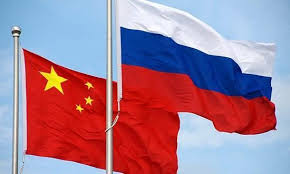
Russia-China trade turnover soars 30% in 2021, on course to reach $200bn by 2024 www.rt.com
The trade turnover between Russia and China from January to August 2021 has surged by 29.5%, amounting to $88.997 billion.
According to data published by China’s customs service, the country’s exports to Russia in the reporting period increased by 31.6% and amounted to $40.804 billion. Imports of Russian goods and services also rose by 27.8%, to some $48.193 billion. In August alone, the volume of trade between the two states amounted to $13.363 billion.
Both Russian and Chinese authorities have been set on increasing bilateral trade volume. In June of this year, Russian President Vladimir Putin said that given the fact the two countries were able to maintain trade turnover at $100 billion even in pandemic-plagued 2020, they were fully capable of reaching $200 billion by 2024.
China also voiced intentions to boost bilateral trade earlier this year, with the Ministry of Commerce announcing that the country will step up expanding economic contacts with Russia on both the central and interregional levels. For instance, at the Eastern Economic Forum (EEF) in Russia's Vladivostok last week China’s ambassador to Russia, Zhang Hanhui, said Beijing is planning to boost trade and economic partnership with Russia’s Far East regions.
“We are ready to work with the Russian Federation for expansion of cooperation on the whole territory of the Far East, to contribute to the recovery of the region’s economy, its sustainable development, and recovery after the pandemic,” the envoy stated.
China’s overall external trade in the first eight months of this year grew 34.2% year-on-year to $3.827 trillion. The country’s total January-August exports grew by 33.7%, to $2.095 trillion, while imports rose 34.8% to $1.732 trillion.
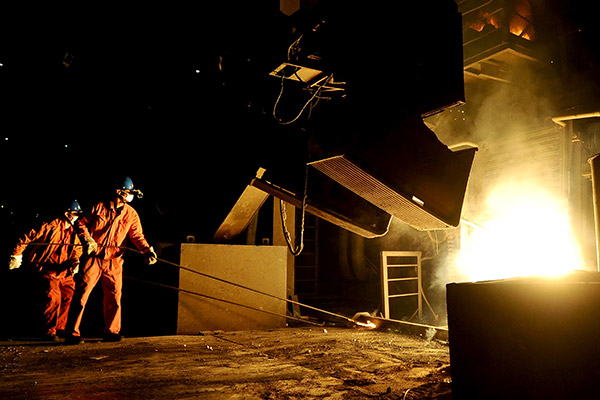
Iron ore price rises as China’s imports hit record www.mining.com
The Iron ore price rebounded on Tuesday from a seven-month low after data showed China’s imports in August picked up for the first time in five months, rising 10.1% over July.
China imported iron ore worth a record $20 billion in August, despite steel production curbs in the world’s largest producer. Total volumes were 97.5 million tonnes.
According to Fastmarkets MB, benchmark 62% Fe fines imported into Northern China were changing hands for $137.97 a tonne, up 4.2% from Monday’s closing.
It was also a record month for the value of China’s overall imports from Australia, with much of that likely coming from shipments of the red metal.
The most-traded iron ore contract for January 2022 delivery on China’s Dalian Commodity Exchange ended daytime trading 1.1% higher at 763 yuan ($118.18) a tonne, recovering from losses that brought it to as low as 718.50 yuan earlier in the session, its weakest since February 4.
China's iron ore import.
Despite China’s steel output controls to curb carbon emissions, Sinosteel Futures analysts said domestic demand for iron ore has not significantly dropped.
“There has been no large-scale production suspension and restriction,” Sinosteel Futures said in a note.
Guinea coup
A military junta seized control in the West African country of Guinea and detained President Alpha Conde, casting uncertainty over key bauxite and iron ore supplies.
Guinea’s 110-kilometer Simandou range hosts one of the largest untapped iron ore deposits in the world, containing more than 8.6 billion tonnes of ore with an average 65% iron content.
Simandou is situated in the remote southeastern interior of the country, a vast distance from the capital Conakry.
“The infrastructure demands of the project are consequently massive in scale, complexity and cost, larger on all measures than the bauxite export industry that has been established in the country in recent years,” said Andrew Gadd, senior steel analyst at CRU Group.
“Geopolitical risk has been one of many hurdles hindering the progress of Simandou up until now and the military coup that is now unfolding in the country marks a significant deterioration in the prospects for successful development of the deposit.”
In January, Israeli diamond and mining tycoon Beny Steinmetz was found guilty of bribing a public official to secure the giant iron-ore mine in Guinea.
He was sentenced to five years, but his lawyers say they will appeal all the way to the Supreme Court.
(With files from Bloomberg and Reuters)

President U.Khurelsukh to hold high-level online meeting with his South Korean counterpart www.montsame.mn
President of Mongolia U.Khurelsukh will hold a high-level online meeting with President of the Republic of Korea Moon Jae-in on September 10. This will mark the first meeting between the Presidents of the two countries in four years.
Since the establishment of diplomatic relations between Mongolia and the Republic of Korea in 1990, bilateral relations and cooperation have expanded in all fields, and now the Republic of Korea has become an important trade and investment partner to Mongolia. During the summit, the two Presidents will hold discussion on elevating the comprehensive partnership between the two countries to strategic partnership.
Moreover, the sides will review the current state of political, economic, trade, investment, cultural, educational and humanitarian relations between the two countries, and identify future directions of relations and cooperation. It is also planned to exchange views on international and regional issues of mutual interest, and to hold broad discussions to intensify implementation of projects and programs being realized through soft loans and grants, and support people-to-people exchanges.

ADB introduces new strategy to help Mongolia recover from COVID-19 www.xinhuanet.com
(Xinhua) -- The Asian Development Bank (ADB) has launched a new country partnership strategy (CPS) for Mongolia covering 2021-2024 to help the country recover from the COVID-19 pandemic, local media reported on Tuesday.
The new strategy also lays a resilient foundation for inclusive and sustainable growth, the report cited the bank's office in the country as saying.
In the four years, the ADB's operations in Mongolia will focus on three strategic priorities: inclusive social development and economic opportunity; climate-resilient infrastructure; and sustainable, green, and climate-conscious development, the bank said in a statement.
"ADB will build on the strong foundations of past engagement as a leading development partner, while innovating to boost the climate change response, strengthen the business environment, and ensure that the COVID-19 recovery drives lasting reforms in areas such as health and social protection," said Pavit Ramachandran, ADB country director for Mongolia.
"It will retain flexibility to continue to respond to COVID-19 and be ready for emerging priorities," he said.
The CPS is aligned with the Mongolian government's relevant plans to ensure COVID-19 recovery by boosting economic revitalization, job creation, and more inclusive and sustainable development, according to the bank.

Heads of Mongolia-China intergovernmental commission meet virtually www.montsame.mn
On September 7, the heads of the Mongolian and Chinese parts of the Intergovernmental Commission for Trade, Economic, Scientific and Technical Cooperation held a virtual meeting.
Deputy Prime Minister of Mongolia S.Amarsaikhan and Chinese Minister of Commerce Wang Wentao took part in the meeting, and exchanged views on the progress of the implementation of the Protocol for the 16th meeting of the intergovernmental commission as well as timely issues.
Noting that bilateral trade turnover has increased compared with the same period of the previous year as a result of the focus put on reducing the effects of the coronavirus infection, ensuring normal bilateral trade and economic cooperation, the ministers agreed to actively cooperate to increase trade turnover to USD 10 billion. In order to achieve this goal, the sides agreed to take preventive measures against the spread of COVID-19, and increasing the flow of goods crossing through the main border checkpoints.
After presenting the measures currently being taken to strengthen infection prevention, Deputy Prime Minister S.Amarsaikhan put forth the suggestion to significantly increase the number of coal trucks entering through the Gashuunsukhait-Gantsmod, Shiveekhuren-Sekhee border checkpoints, and to reach an agreement on the procedure of containerized transportation.
In turn, Chinese Minister of Commerce Wang Wentao expressed that he will pay attention to the suggestion put forth by the Mongolian Deputy Minister in order to resolve issues related to importing cargo that have accumulated at Tianjin Port, increase the number of trains going between Zamiin-Uud and Erlian stations, and restore the export of non-mining products crossing through the Zamiin-Uud border checkpoint, and that the corresponding organizations of China will be urgently informed about the matter.
Moreover, relevant organizations of the two countries agreed to actively cooperate to accelerate the implementation of projects financed with non-refundable aid and soft loans.

China willing to buy more mineral, agriculture products from Mongolia www.reuters.com
BEIJING, Sept 8 (Reuters) - China is willing to buy more mineral and agriculture products from Mongolia and will work with it to ensure unimpeded trade across their border, China’s commerce ministry said.
Minister of Commerce Wang Wentao, in a video meeting with Mongolia Vice Premier Amarsaikhan Sainbuyan on Tuesday, said China pays high attention to border trade with Mongolia and will promote infrastructure connections to expand trade.
Amarsaikhan said he hoped China would increase the volume of goods crossing the border, import more non-mineral products and support cross-border container transport, the Chinese ministry said in a statement late on Tuesday.
China mainly import coal, iron ore and frozen horse meat from Mongolia.
Mongolia is one of China’s main coking coal suppliers, especially after Beijing stopped coal imports from Australia in December last year.
In the first seven months of 2021, China bought 8.84 million tonnes of coking coal from Mongolia, about 34% of China’s total imports.
However, coal shipments have slowed since April due to the resurgence of COVID-19 in Mongolia, with coal cargos falling to less than 200 in August from more than 800 in the same period in 2021.
China’s coking coal prices gained 90% over the past five months and hit a record high of 2,971 yuan ($459.71) per tonne on Tuesday, on concern about a supply crunch. ($1 = 6.4627 Chinese yuan) (Reporting by Muyu Xu and David Stanway Editing by Robert Birsel)
- «
- 1
- 2
- 3
- 4
- 5
- 6
- 7
- 8
- 9
- 10
- 11
- 12
- 13
- 14
- 15
- 16
- 17
- 18
- 19
- 20
- 21
- 22
- 23
- 24
- 25
- 26
- 27
- 28
- 29
- 30
- 31
- 32
- 33
- 34
- 35
- 36
- 37
- 38
- 39
- 40
- 41
- 42
- 43
- 44
- 45
- 46
- 47
- 48
- 49
- 50
- 51
- 52
- 53
- 54
- 55
- 56
- 57
- 58
- 59
- 60
- 61
- 62
- 63
- 64
- 65
- 66
- 67
- 68
- 69
- 70
- 71
- 72
- 73
- 74
- 75
- 76
- 77
- 78
- 79
- 80
- 81
- 82
- 83
- 84
- 85
- 86
- 87
- 88
- 89
- 90
- 91
- 92
- 93
- 94
- 95
- 96
- 97
- 98
- 99
- 100
- 101
- 102
- 103
- 104
- 105
- 106
- 107
- 108
- 109
- 110
- 111
- 112
- 113
- 114
- 115
- 116
- 117
- 118
- 119
- 120
- 121
- 122
- 123
- 124
- 125
- 126
- 127
- 128
- 129
- 130
- 131
- 132
- 133
- 134
- 135
- 136
- 137
- 138
- 139
- 140
- 141
- 142
- 143
- 144
- 145
- 146
- 147
- 148
- 149
- 150
- 151
- 152
- 153
- 154
- 155
- 156
- 157
- 158
- 159
- 160
- 161
- 162
- 163
- 164
- 165
- 166
- 167
- 168
- 169
- 170
- 171
- 172
- 173
- 174
- 175
- 176
- 177
- 178
- 179
- 180
- 181
- 182
- 183
- 184
- 185
- 186
- 187
- 188
- 189
- 190
- 191
- 192
- 193
- 194
- 195
- 196
- 197
- 198
- 199
- 200
- 201
- 202
- 203
- 204
- 205
- 206
- 207
- 208
- 209
- 210
- 211
- 212
- 213
- 214
- 215
- 216
- 217
- 218
- 219
- 220
- 221
- 222
- 223
- 224
- 225
- 226
- 227
- 228
- 229
- 230
- 231
- 232
- 233
- 234
- 235
- 236
- 237
- 238
- 239
- 240
- 241
- 242
- 243
- 244
- 245
- 246
- 247
- 248
- 249
- 250
- 251
- 252
- 253
- 254
- 255
- 256
- 257
- 258
- 259
- 260
- 261
- 262
- 263
- 264
- 265
- 266
- 267
- 268
- 269
- 270
- 271
- 272
- 273
- 274
- 275
- 276
- 277
- 278
- 279
- 280
- 281
- 282
- 283
- 284
- 285
- 286
- 287
- 288
- 289
- 290
- 291
- 292
- 293
- 294
- 295
- 296
- 297
- 298
- 299
- 300
- 301
- 302
- 303
- 304
- 305
- 306
- 307
- 308
- 309
- 310
- 311
- 312
- 313
- 314
- 315
- 316
- 317
- 318
- 319
- 320
- 321
- 322
- 323
- 324
- 325
- 326
- 327
- 328
- 329
- 330
- 331
- 332
- 333
- 334
- 335
- 336
- 337
- 338
- 339
- 340
- 341
- 342
- 343
- 344
- 345
- 346
- 347
- 348
- 349
- 350
- 351
- 352
- 353
- 354
- 355
- 356
- 357
- 358
- 359
- 360
- 361
- 362
- 363
- 364
- 365
- 366
- 367
- 368
- 369
- 370
- 371
- 372
- 373
- 374
- 375
- 376
- 377
- 378
- 379
- 380
- 381
- 382
- 383
- 384
- 385
- 386
- 387
- 388
- 389
- 390
- 391
- 392
- 393
- 394
- 395
- 396
- 397
- 398
- 399
- 400
- 401
- 402
- 403
- 404
- 405
- 406
- 407
- 408
- 409
- 410
- 411
- 412
- 413
- 414
- 415
- 416
- 417
- 418
- 419
- 420
- 421
- 422
- 423
- 424
- 425
- 426
- 427
- 428
- 429
- 430
- 431
- 432
- 433
- 434
- 435
- 436
- 437
- 438
- 439
- 440
- 441
- 442
- 443
- 444
- 445
- 446
- 447
- 448
- 449
- 450
- 451
- 452
- 453
- 454
- 455
- 456
- 457
- 458
- 459
- 460
- 461
- 462
- 463
- 464
- 465
- 466
- 467
- 468
- 469
- 470
- 471
- 472
- 473
- 474
- 475
- 476
- 477
- 478
- 479
- 480
- 481
- 482
- 483
- 484
- 485
- 486
- 487
- 488
- 489
- 490
- 491
- 492
- 493
- 494
- 495
- 496
- 497
- 498
- 499
- 500
- 501
- 502
- 503
- 504
- 505
- 506
- 507
- 508
- 509
- 510
- 511
- 512
- 513
- 514
- 515
- 516
- 517
- 518
- 519
- 520
- 521
- 522
- 523
- 524
- 525
- 526
- 527
- 528
- 529
- 530
- 531
- 532
- 533
- 534
- 535
- 536
- 537
- 538
- 539
- 540
- 541
- 542
- 543
- 544
- 545
- 546
- 547
- 548
- 549
- 550
- 551
- 552
- 553
- 554
- 555
- 556
- 557
- 558
- 559
- 560
- 561
- 562
- 563
- 564
- 565
- 566
- 567
- 568
- 569
- 570
- 571
- 572
- 573
- 574
- 575
- 576
- 577
- 578
- 579
- 580
- 581
- 582
- 583
- 584
- 585
- 586
- 587
- 588
- 589
- 590
- 591
- 592
- 593
- 594
- 595
- 596
- 597
- 598
- 599
- 600
- 601
- 602
- 603
- 604
- 605
- 606
- 607
- 608
- 609
- 610
- 611
- 612
- 613
- 614
- 615
- 616
- 617
- 618
- 619
- 620
- 621
- 622
- 623
- 624
- 625
- 626
- 627
- 628
- 629
- 630
- 631
- 632
- 633
- 634
- 635
- 636
- 637
- 638
- 639
- 640
- 641
- 642
- 643
- 644
- 645
- 646
- 647
- 648
- 649
- 650
- 651
- 652
- 653
- 654
- 655
- 656
- 657
- 658
- 659
- 660
- 661
- 662
- 663
- 664
- 665
- 666
- 667
- 668
- 669
- 670
- 671
- 672
- 673
- 674
- 675
- 676
- 677
- 678
- 679
- 680
- 681
- 682
- 683
- 684
- 685
- 686
- 687
- 688
- 689
- 690
- 691
- 692
- 693
- 694
- 695
- 696
- 697
- 698
- 699
- 700
- 701
- 702
- 703
- 704
- 705
- 706
- 707
- 708
- 709
- 710
- 711
- 712
- 713
- 714
- 715
- 716
- 717
- 718
- 719
- 720
- 721
- 722
- 723
- 724
- 725
- 726
- 727
- 728
- 729
- 730
- 731
- 732
- 733
- 734
- 735
- 736
- 737
- 738
- 739
- 740
- 741
- 742
- 743
- 744
- 745
- 746
- 747
- 748
- 749
- 750
- 751
- 752
- 753
- 754
- 755
- 756
- 757
- 758
- 759
- 760
- 761
- 762
- 763
- 764
- 765
- 766
- 767
- 768
- 769
- 770
- 771
- 772
- 773
- 774
- 775
- 776
- 777
- 778
- 779
- 780
- 781
- 782
- 783
- 784
- 785
- 786
- 787
- 788
- 789
- 790
- 791
- 792
- 793
- 794
- 795
- 796
- 797
- 798
- 799
- 800
- 801
- 802
- 803
- 804
- 805
- 806
- 807
- 808
- 809
- 810
- 811
- 812
- 813
- 814
- 815
- 816
- 817
- 818
- 819
- 820
- 821
- 822
- 823
- 824
- 825
- 826
- 827
- 828
- 829
- 830
- 831
- 832
- 833
- 834
- 835
- 836
- 837
- 838
- 839
- 840
- 841
- 842
- 843
- 844
- 845
- 846
- 847
- 848
- 849
- 850
- 851
- 852
- 853
- 854
- 855
- 856
- 857
- 858
- 859
- 860
- 861
- 862
- 863
- 864
- 865
- 866
- 867
- 868
- 869
- 870
- 871
- 872
- 873
- 874
- 875
- 876
- 877
- 878
- 879
- 880
- 881
- 882
- 883
- 884
- 885
- 886
- 887
- 888
- 889
- 890
- 891
- 892
- 893
- 894
- 895
- 896
- 897
- 898
- 899
- 900
- 901
- 902
- 903
- 904
- 905
- 906
- 907
- 908
- 909
- 910
- 911
- 912
- 913
- 914
- 915
- 916
- 917
- 918
- 919
- 920
- 921
- 922
- 923
- 924
- 925
- 926
- 927
- 928
- 929
- 930
- 931
- 932
- 933
- 934
- 935
- 936
- 937
- 938
- 939
- 940
- 941
- 942
- 943
- 944
- 945
- 946
- 947
- 948
- 949
- 950
- 951
- 952
- 953
- 954
- 955
- 956
- 957
- 958
- 959
- 960
- 961
- 962
- 963
- 964
- 965
- 966
- 967
- 968
- 969
- 970
- 971
- 972
- 973
- 974
- 975
- 976
- 977
- 978
- 979
- 980
- 981
- 982
- 983
- 984
- 985
- 986
- 987
- 988
- 989
- 990
- 991
- 992
- 993
- 994
- 995
- 996
- 997
- 998
- 999
- 1000
- 1001
- 1002
- 1003
- 1004
- 1005
- 1006
- 1007
- 1008
- 1009
- 1010
- 1011
- 1012
- 1013
- 1014
- 1015
- 1016
- 1017
- 1018
- 1019
- 1020
- 1021
- 1022
- 1023
- 1024
- 1025
- 1026
- 1027
- 1028
- 1029
- 1030
- 1031
- 1032
- 1033
- 1034
- 1035
- 1036
- 1037
- 1038
- 1039
- 1040
- 1041
- 1042
- 1043
- 1044
- 1045
- 1046
- 1047
- 1048
- 1049
- 1050
- 1051
- 1052
- 1053
- 1054
- 1055
- 1056
- 1057
- 1058
- 1059
- 1060
- 1061
- 1062
- 1063
- 1064
- 1065
- 1066
- 1067
- 1068
- 1069
- 1070
- 1071
- 1072
- 1073
- 1074
- 1075
- 1076
- 1077
- 1078
- 1079
- 1080
- 1081
- 1082
- 1083
- 1084
- 1085
- 1086
- 1087
- 1088
- 1089
- 1090
- 1091
- 1092
- 1093
- 1094
- 1095
- 1096
- 1097
- 1098
- 1099
- 1100
- 1101
- 1102
- 1103
- 1104
- 1105
- 1106
- 1107
- 1108
- 1109
- 1110
- 1111
- 1112
- 1113
- 1114
- 1115
- 1116
- 1117
- 1118
- 1119
- 1120
- 1121
- 1122
- 1123
- 1124
- 1125
- 1126
- 1127
- 1128
- 1129
- 1130
- 1131
- 1132
- 1133
- 1134
- 1135
- 1136
- 1137
- 1138
- 1139
- 1140
- 1141
- 1142
- 1143
- 1144
- 1145
- 1146
- 1147
- 1148
- 1149
- 1150
- 1151
- 1152
- 1153
- 1154
- 1155
- 1156
- 1157
- 1158
- 1159
- 1160
- 1161
- 1162
- 1163
- 1164
- 1165
- 1166
- 1167
- 1168
- 1169
- 1170
- 1171
- 1172
- 1173
- 1174
- 1175
- 1176
- 1177
- 1178
- 1179
- 1180
- 1181
- 1182
- 1183
- 1184
- 1185
- 1186
- 1187
- 1188
- 1189
- 1190
- 1191
- 1192
- 1193
- 1194
- 1195
- 1196
- 1197
- 1198
- 1199
- 1200
- 1201
- 1202
- 1203
- 1204
- 1205
- 1206
- 1207
- 1208
- 1209
- 1210
- 1211
- 1212
- 1213
- 1214
- 1215
- 1216
- 1217
- 1218
- 1219
- 1220
- 1221
- 1222
- 1223
- 1224
- 1225
- 1226
- 1227
- 1228
- 1229
- 1230
- 1231
- 1232
- 1233
- 1234
- 1235
- 1236
- 1237
- 1238
- 1239
- 1240
- 1241
- 1242
- 1243
- 1244
- 1245
- 1246
- 1247
- 1248
- 1249
- 1250
- 1251
- 1252
- 1253
- 1254
- 1255
- 1256
- 1257
- 1258
- 1259
- 1260
- 1261
- 1262
- 1263
- 1264
- 1265
- 1266
- 1267
- 1268
- 1269
- 1270
- 1271
- 1272
- 1273
- 1274
- 1275
- 1276
- 1277
- 1278
- 1279
- 1280
- 1281
- 1282
- 1283
- 1284
- 1285
- 1286
- 1287
- 1288
- 1289
- 1290
- 1291
- 1292
- 1293
- 1294
- 1295
- 1296
- 1297
- 1298
- 1299
- 1300
- 1301
- 1302
- 1303
- 1304
- 1305
- 1306
- 1307
- 1308
- 1309
- 1310
- 1311
- 1312
- 1313
- 1314
- 1315
- 1316
- 1317
- 1318
- 1319
- 1320
- 1321
- 1322
- 1323
- 1324
- 1325
- 1326
- 1327
- 1328
- 1329
- 1330
- 1331
- 1332
- 1333
- 1334
- 1335
- 1336
- 1337
- 1338
- 1339
- 1340
- 1341
- 1342
- 1343
- 1344
- 1345
- 1346
- 1347
- 1348
- 1349
- 1350
- 1351
- 1352
- 1353
- 1354
- 1355
- 1356
- 1357
- 1358
- 1359
- 1360
- 1361
- 1362
- 1363
- 1364
- 1365
- 1366
- 1367
- 1368
- 1369
- 1370
- 1371
- 1372
- 1373
- 1374
- 1375
- 1376
- 1377
- 1378
- 1379
- 1380
- 1381
- 1382
- 1383
- 1384
- 1385
- 1386
- 1387
- 1388
- 1389
- 1390
- 1391
- 1392
- 1393
- 1394
- 1395
- 1396
- 1397
- 1398
- 1399
- 1400
- 1401
- 1402
- 1403
- 1404
- 1405
- 1406
- 1407
- 1408
- 1409
- 1410
- 1411
- 1412
- 1413
- 1414
- 1415
- 1416
- 1417
- 1418
- 1419
- 1420
- 1421
- 1422
- 1423
- 1424
- 1425
- 1426
- 1427
- 1428
- 1429
- 1430
- 1431
- 1432
- 1433
- 1434
- 1435
- 1436
- 1437
- 1438
- 1439
- 1440
- 1441
- 1442
- 1443
- 1444
- 1445
- 1446
- 1447
- 1448
- 1449
- 1450
- 1451
- 1452
- 1453
- 1454
- 1455
- 1456
- 1457
- 1458
- 1459
- 1460
- 1461
- 1462
- 1463
- 1464
- 1465
- 1466
- 1467
- 1468
- 1469
- 1470
- 1471
- 1472
- 1473
- 1474
- 1475
- 1476
- 1477
- 1478
- 1479
- 1480
- 1481
- 1482
- 1483
- 1484
- 1485
- 1486
- 1487
- 1488
- 1489
- 1490
- 1491
- 1492
- 1493
- 1494
- 1495
- 1496
- 1497
- 1498
- 1499
- 1500
- 1501
- 1502
- 1503
- 1504
- 1505
- 1506
- 1507
- 1508
- 1509
- 1510
- 1511
- 1512
- 1513
- 1514
- 1515
- 1516
- 1517
- 1518
- 1519
- 1520
- 1521
- 1522
- 1523
- 1524
- 1525
- 1526
- 1527
- 1528
- 1529
- 1530
- 1531
- 1532
- 1533
- 1534
- 1535
- 1536
- 1537
- 1538
- 1539
- 1540
- 1541
- 1542
- 1543
- 1544
- 1545
- 1546
- 1547
- 1548
- 1549
- 1550
- 1551
- 1552
- 1553
- 1554
- 1555
- 1556
- 1557
- 1558
- 1559
- 1560
- 1561
- 1562
- 1563
- 1564
- 1565
- 1566
- 1567
- 1568
- 1569
- 1570
- 1571
- 1572
- 1573
- 1574
- 1575
- 1576
- 1577
- 1578
- 1579
- 1580
- 1581
- 1582
- 1583
- 1584
- 1585
- 1586
- 1587
- 1588
- 1589
- 1590
- 1591
- 1592
- 1593
- 1594
- 1595
- 1596
- 1597
- 1598
- 1599
- 1600
- 1601
- 1602
- 1603
- 1604
- 1605
- 1606
- 1607
- 1608
- 1609
- 1610
- 1611
- 1612
- 1613
- 1614
- 1615
- 1616
- 1617
- 1618
- 1619
- 1620
- 1621
- 1622
- 1623
- 1624
- 1625
- 1626
- 1627
- 1628
- 1629
- 1630
- 1631
- 1632
- 1633
- 1634
- 1635
- 1636
- 1637
- 1638
- 1639
- 1640
- 1641
- 1642
- 1643
- 1644
- 1645
- 1646
- 1647
- 1648
- 1649
- 1650
- 1651
- 1652
- 1653
- 1654
- 1655
- 1656
- 1657
- 1658
- 1659
- 1660
- 1661
- 1662
- 1663
- 1664
- 1665
- 1666
- 1667
- 1668
- 1669
- 1670
- 1671
- 1672
- 1673
- 1674
- 1675
- 1676
- 1677
- 1678
- 1679
- 1680
- 1681
- 1682
- 1683
- 1684
- 1685
- 1686
- 1687
- 1688
- 1689
- 1690
- 1691
- 1692
- 1693
- 1694
- »






